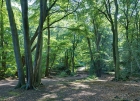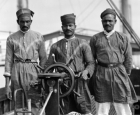Outside the classroom
Working outside the classroom environment gives younger children lots of experiences to develop their understanding. For example a simple walk around the local streets supports their growing understanding of old/new and local history. Experiencing contrasting spaces, for example a castle or cathedral helps them to begin to explore similarities and differences. Visiting historic sites or museums will encourage their language development and communication skills as well as give a context to these discussions.
Sort by:
Date (Newest first) | Title A-Z
Show:
All |
Articles |
Podcasts |
Multipage Articles
-

Learning about the past through toys and games
ArticleClick to view -

Local history and a sense of identity
ArticleClick to view -

Making use of outstanding resources in museums
ArticleClick to view -

Museums, schools and creativity: How learning can be enhanced
ArticleClick to view -

One of my favourite history places: Bournville
ArticleClick to view -

One of my favourite history places: Mount Fitchet Castle
ArticleClick to view -

Piecing together the puzzle: Some thoughts on historical sites
ArticleClick to view -

Planning for history and environmental education
ArticleClick to view -

Primary History summer resource 2022: Museum visits
ArticleClick to view -

Questions you have always wanted to ask about... History and archaeology
ArticleClick to view -

Scheme of work: Local history – the story of our High Street
ArticleClick to view -

TREE-mendous history!
ArticleClick to view -

Teaching diversity through drama
ArticleClick to view -

The 2014 History National Curriculum: how to get the best from heritage
ArticleClick to view -

The Early Years Foundation Stage Curriculum
ArticleClick to view -

The History around us: Local history
ArticleClick to view -

The wheels (and horses…) on the bus
ArticleClick to view -

Using Spaces Near You
ArticleClick to view -

Using museums, libraries and art galleries
ArticleClick to view -

Using the back cover image: Mummified cat
ArticleClick to view

